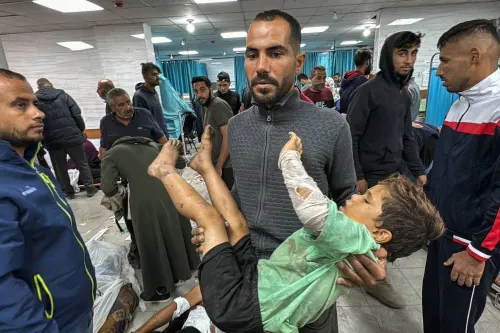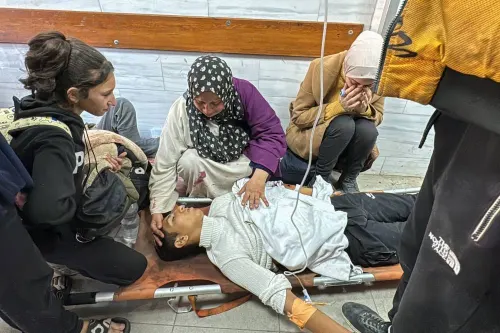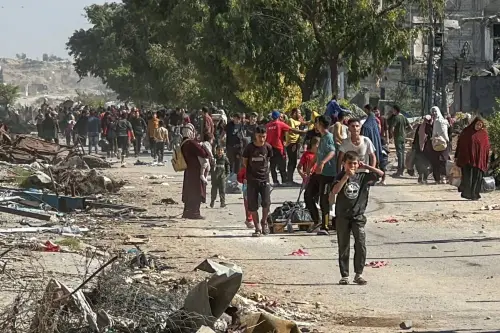Israeli forces intensified their siege of northern Gaza Wednesday, killing 42 people in widespread strikes while tightening their encirclement of hospitals and refugee shelters, as the humanitarian situation deteriorates following the death of Hamas leader Yahya Al-Sinwar.

The renewed offensive has claimed at least 650 lives since its inception, with 37 of Wednesday’s 42 fatalities occurring in northern Gaza. The operation, which began three weeks ago to prevent Hamas fighters from regrouping, has accelerated dramatically since Sinwar’s death last week.
The siege has paralyzed essential services across northern Gaza. The Civil Emergency Service suspended all operations after Israeli forces detained five staff members and destroyed their only fire truck in what rescuers called a “targeted strike” aimed at forcing them from Jabalia. Three rescue workers were wounded in the incident, leaving citizens “without any kind of humanitarian services,” according to emergency officials.
“We call on the world, which has failed to provide protection and shelter for our people and has been unable to deliver food and medicine, to make an effort to send shrouds for our fallen,” the Gaza health ministry pleaded in a statement, as hospitals report critical shortages of blood, coffins, and burial shrouds.

The crisis has forced the cancellation of a crucial polio vaccination campaign targeting 120,000 children in Gaza City and northern Gaza, after the first case in 25 years was recently detected. Despite Israel’s COGAT humanitarian unit claiming 237 aid trucks reached northern Gaza over eight days, Palestinian health officials report no aid has reached Jabalia, Beit Hanoun, and Beit Lahiya.
The United Nations Palestinian refugee agency UNRWA reported another staff casualty when an agency vehicle was struck in Deir Al-Balah, central Gaza. The death adds to mounting civilian casualties as the overall toll approaches 43,000, with nearly all of Gaza’s 2.3 million residents displaced, many multiple times.
U.S. Secretary of State Antony Blinken arrived in Israel to push for a ceasefire before heading to Saudi Arabia, marking the first major U.S. peace initiative since Sinwar’s death and the last before America’s November 5 presidential election. While Washington had hoped Sinwar’s elimination might facilitate peace by fulfilling some of Israel’s objectives, the Israeli military has instead escalated operations, particularly in northern areas where it claims Hamas fighters are regrouping in previously targeted zones.

The intensification includes deployment of additional forces to Jabalia, where residents report troops have besieged shelters, forcing evacuations while detaining men. Health officials say dozens of bodies lie scattered and unreachable on roadsides and under rubble, while northern hospitals have either ceased operations or barely function amid the offensive.
The current campaign follows the October 7, 2023 Hamas-led attack on Israel that killed 1,200 people and saw about 250 taken hostage. Israel’s subsequent response has transformed much of Gaza into what aid agencies describe as an uninhabitable war zone, with critical infrastructure destroyed and humanitarian access severely restricted.
REUTERS



